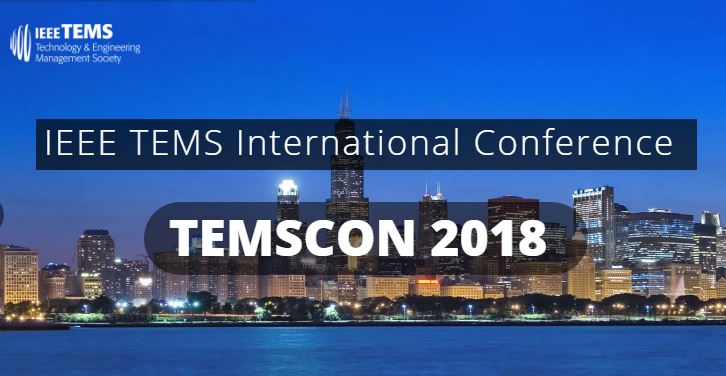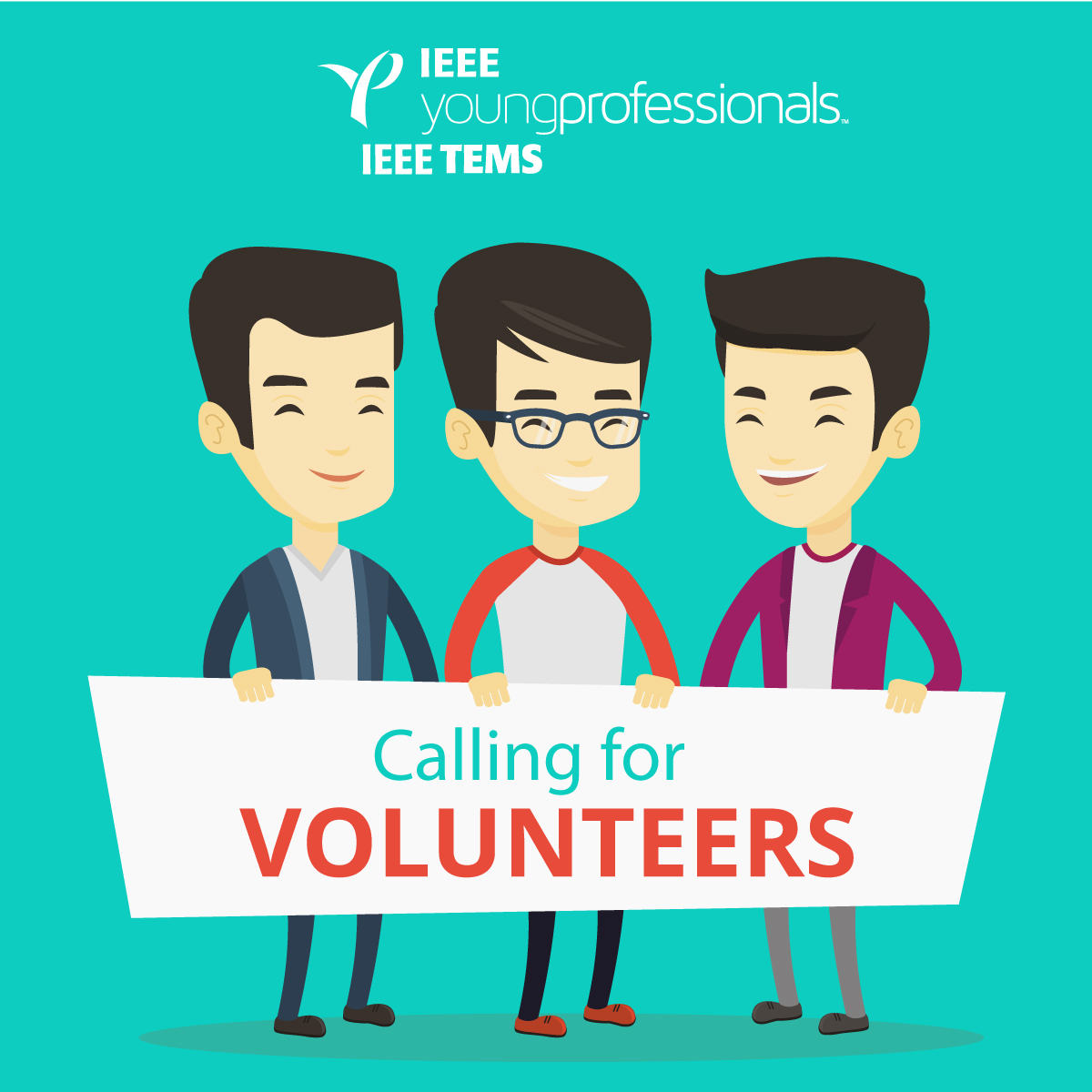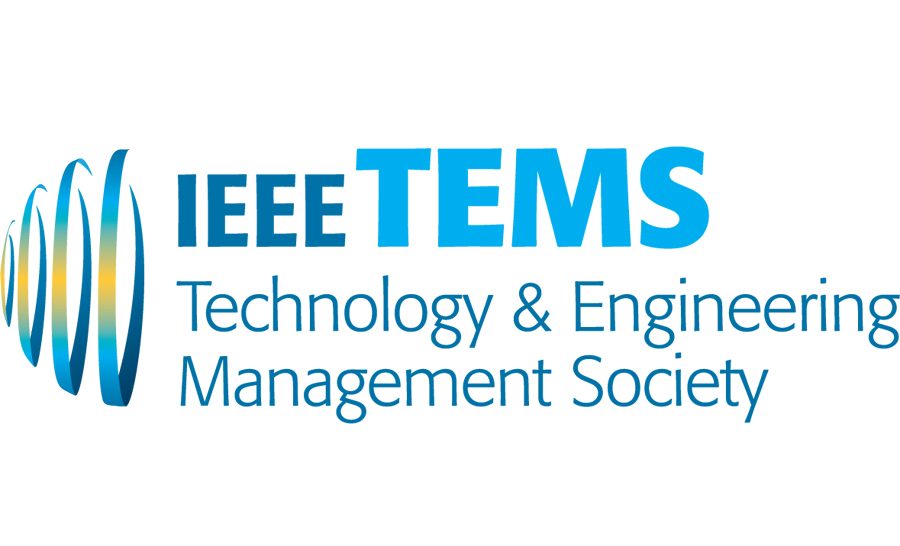1. Announcements
I am grateful to the journal’s Department Editors and Editorial Review Board members, as well as the ad hoc reviewers, who all contribute to the timely decisions on manuscripts. We strive to have a 60-day turnaround time and to make a final decision with one or two rounds of revisions. However, we do sometimes encounter delays, and for this I apologize to all the affected authors. I thank the authors for the papers submitted to the journal, for making revisions in a timely and effective fashion, and for their patience in case a review is delayed. We accept about 20% of the papers we receive, but hope that the authors of the rejected papers also receive valuable suggestions for improving the papers as they target other journals.
Tyson Browning, the Department Editor for Review Articles, has stepped down from this role. I am grateful to Tyson for his excellent contributions to the Transactions over the years. I also welcome Claudia Eckert, who has served as an Editorial Review Board member for some time, and will be the next Department Editor for Review Articles.
We also welcome 40 new members of the Editorial Review Board: Anant Mishra, Barney Tan, Carol Hsu, Chee Wee Tan, Chunguang Bai, Claudia Rosales, Daniel Chen, David Wynn, Dev Dutta, Franck Marle, Guangzhi Shang, Gulru Ozkan-Seely, Helena Barnard, Hongmin Li, Jafar Rezaei , James Cordeiro , Jennifer Pazour, Jiho Yoon, Jonathan Ye, Kaushik Sinha, LaDonna Thornton, Martin Hoegl, Michel Alexandre Cardin, Michelle Carter, Nick Hajli, Nuria Forcada, Pankaj Patel, Qianqian (Ben) Liu, Riccardo Mogre, Shu Han, Shun Ye, Soren Wandahl, Stephen Teo, Steven Eppinger, Taha Havakhor, Xitong Li, Yimin Wang, Young Lee, Yu Tong, and Zach Steelman. I would like to thank these individuals for taking on this responsibility, as well as to the individuals who are continuing on the Editorial Review Board.
However, the following 41 individuals are rotating off the board: Andy Davies, Ann McFadyen, Ansi Käki, Aravind Chandrasekaran, Benjamin Campbell, Choi Young Rok, Chon Abraham, Chris Craighead, Craig A Hill, Erk Jan Hultink, Francisco Polidoro, Fred Niederman, Hasan Cavusoglu, Heng Xu, Hock Hai Teo, In Hyeock Lee, Janice Carillo, Janice Thomas, Jason Thatcher, Jennifer Ryan, Marguerite Schneider, Martin Hemmert, Mary Lacity, Mathew Liberatore, Michael Santoro, Oliver Alexy, Paul Olk, Ronald L. Hess, Ruud Teunter, Scott Gibson, Sue Brown, Susana G Azevedo, Terri Griffith, Tugrul Daim, Vivek Choudhury, Wenming Chung, William Stewart, Willow Sheremata, Xiaobu Wu, Xiaohong Quan, and Yuliang (Oliver) Yao. I am grateful to each of these individuals for their excellent service to the journal.
Finally, I am grateful to all the subscribers and readers of the IEEE TRANSACTIONS ON ENGINEERING MANAGEMENT over the years. I invite you to complete the reader survey included in this issue (http://surveys.ieee.org/wix/p3071293413.aspx), and also to email me about any suggestions or concerns.
2.Special Issues
Proposals for special issues on topics of current interest in engineering, technology, and innovation management are always welcome. Please send a brief description of the concept for the issue to me (sabherwal@ieee.org). I will circulate it to department editors, and if the initial response is favorable, I will request a specific plan and more detailed information to be used in the final decision about proceeding with the special issue.
3.Online Submission and Review System
The journal office currently experiences many returned e-mails via the journal’s online system. Since e-mails are used to communicate with corresponding authors, coauthors, and reviewers during the review process, it is very important for users to keep updating their accounts in the system. Please login to http://mc.manuscriptcentral.com/tem-ieee to update your contact information when you change your e-mail addresses. New users are also welcome to create their own accounts in the system.
Also, please be sure that the SPAM filters on your own servers are set to receive mail from Manuscript Central. The journal’s online server should be whitelisted to mark it as a valid e-mail sender: 170.107.181.135.
4.About This Issue
This issue of the IEEE TRANSACTIONS ON ENGINEERING MANAGEMENT includes fifteen research articles. The relevance and usefulness of the articles is summarized below:
“An Empirical Study of the Telecommunications Service Industries Using Productivity Decomposition” (by Shao, Lin, and Tsai): This paper provides managerial insights into the output performance of the telecommunications service industry. Unlike many other services industries, telecommunications service industry is innovative at facilitating novel services as outputs (i.e., product innovations) and new ways of delivering these services (i.e., process innovations). The authors’ decomposition of Malmquist TFP index shows that many countries operate inefficiently and lag behind leading peers. That is, lagging countries are hard pressed to catch up with leaders. Further, telecommunications service industry must cope with the issue of fluctuating market demands that have an adverse impact on productivity. The authors also find that telecommunications service industries in OECD countries show notable productivity growth; technology innovation is the main factor responsible for the observed productivity growth; the inhibitors are efficiency change and scale change; and the productivity is influenced by the changing market dynamics of the telecommunications service industry.
“Middle Managers’ Engagement in Autonomous Strategic Actions: Does it Really Matter How Top Mangers Use Budgets” (by Linder and Torp): Budgets are one of the most widely used management tools in organizations. Several conceptual articles claim that the way in which budgets are used influences the level of a particular type of intrapreneurship: middle managers’ autonomous strategic actions (ASA). This type of intrapreneurship focuses on new business opportunities by introducing new products to new markets. This paper suggests an interactive way of using budgets to foster such entrepreneurial behaviors. Since fostering middle managers’ entrepreneurial behavior is a key concern for many established firms today, and as managers can choose the way in which they use budgets, testing these claims empirically has high practical importance for advising engineering management. The authors draw on a broad sample of large Danish firms to test these claims for the use of annual budgets. In contrast to views advanced in conceptual literature, the results suggest that the way annual budgets are used does not significantly impact the level of ASA. Rather, it is boundary systems and middle managers’ autonomy which significantly affect the level of such intrapreneurship. The findings thus provide advice to engineering managers on where to look in order to promote entrepreneurial behaviors.
“Equilibrium Analysis of Markup Pricing Strategies under Power Imbalance Supply Chain Competition” (by Wang, Hua, Wang, and Lai): Markup pricing policies have been widely employed in the retailing industry. Typically, there are two variations of markup pricing policies, namely, fixed-dollar markup and percentage markup, most commonly used in practice. However, it is unclear why certain markup pricing policy is used in some industry while the other is not? Is it because the manager is not aware of possible better alternatives, or is it because different alternatives have already been considered and the implemented one is indeed the best for the situation? This study intends to fill the literature gap by giving answers to these questions. The findings indicate that the company, that wants to apply the results to determine which markup variant to use, should first recognize its position in the markup (price-leader or price-follower) and then identify the degree of the supply chain-to-chain competition. Besides, as an unexpected by-product, the findings also show that the retailer should be cautions when exerting the market power because such power might result in a ”first-mover” disadvantage even under a linear demand curve in some common situation.
“Economic, Environmental, and Social Impact of Remanufacturing in a Competitive Setting” (by Raz, Ovchinnikov, and Blass): In recent years, many product-service firms started using remanufactured products to extend their product lines. For example, communication firms such as AT&T that sell phones together with voice and data plans introduced refurbished phones in their product line, while companies such as HP that sell printers and cartridges introduced refurbished printers in their product line. Remanufacturing enables firms to extend the useful life of their products, diverts items from the waste stream, and allows some consumers to upgrade from lower-end new products to higher-end refurbished ones. While all these elements intuitively have environmental benefits, several recent studies suggested that remanufacturing may actually worsen firms’ environmental impact. To what extent this would hold under competition, however, is unclear. Using a data-driven model, this paper examines the impact of remanufacturing on the product line competition of product-service firms. The authors show that while remanufacturing in a product-service context under competition might increase environmental impact and cost due to market expansion, it is highly profitable for firms and in addition, lower prices and market expansion, create additional consumer surplus. Thus, overall, remanufacturing creates a significant societal benefit. Examining the robustness of their results, the authors show even if the present-dollar equivalent of environmental externality is below the true societal cost, their qualitative result is quite robust and remanufacturing is beneficial to society. To better understand the source of impacts, they disaggregate the total welfare into a portion attributed to the production stage (firm-oriented) and that attributed to the use phase (consumer-oriented) and find that both firm and consumer impacts improved when remanufacturing is introduced. This suggests that the overall positive social welfare is not affected by one agent or stage, but rather, welfare improvements occur with both firms and consumers.
“In-Store Pickup and Online Returns for a Dual Channel Retailer” (by Mahar and Wright): Offering in-store pickup and return of online sales is an important consideration for dual channel retailers. Most retailers adopt an all-or-nothing strategy without truly understanding the costs and benefits. This paper helps managers understand the cost-benefit of offering the services but also gives guidance on which locations should be set up for in-store pickup and returns. This is important since it is typically not optimal to offer these services at all locations. The computational results show that optimizing the set of pickup and return locations can reduce system cost by up to 20% on average over arbitrarily enabling all store locations with Internet pickup and return capabilities. Furthermore, placing even a small emphasis on customer value in the pickup/return decision can yield relatively large rewards to the customer. Practically, this suggests that firms can significantly increase customer value while maintaining cost minimization as an important selection criterion in choosing pickup/return locations.
Understanding these relationships and tradeoffs help managers make better decisions for their organizations.
“Affinely Adjustable Robust Model for Multi-Period Production Planning under Uncertainty” (by Kim and Chung): Production planning under uncertainty becomes an important issue in practices and academia. Recently, several robust optimization approaches have been proposed and applied in various areas to address the demand uncertainty, especially when known probability distribution is not available. The models and results in this paper are informative for decision makers who are responsible for production planning and operations management as follows: The paper develops a static robust counterpart (RC) for a ‘here and now’ decision and an affinely adjustable robust counterpart (AARC) for a ‘wait and see’ decision. Both models are reformulated as equivalent linear programming problems, which are computationally tractable. The numerical experiments provide some general insights for production planning under uncertainty: (1) the price of robustness is significant when the RC is applied. That is, the RC is too conservative to be employed in practice even if the solution feasibility is improved; (2) the AARC provides a solution that is less sensitive to uncertain demand; and (3) the AARC is a better strategy for the multi-period production planning problem under uncertainty, especially when penalty cost due to lost sales is high and unknown demand is expected to be left skewed. The study’s results are expected to be applicable to wide range of multi-period problems in other industries.
“Multi-Criteria Green Supplier Segmentation” (by Bai, Rezaei, and Sarkis): Green supplier segmentation is important for organizations to build and improve existing green supplier management strategies and activities. This paper builds on traditional supplier segmentation approaches and strategies which organizations use to plan and manage their suppliers. Tools have been developed and applied for this important managerial process, however little attention has been paid to incorporating environmental and sustainability elements into them. With these additional factors, a novel methodology decision support and management tool for green supplier segmentation is introduced. Companies that utilize this methodology can more easily manage a large number of suppliers by formulating business and environmental relationship management strategies for subsets of suppliers. Supplier segmentation is an efficient way to help organizations target green supplier strategies. The most direct outcome of this study is that the segmentations can be effective for identifying three heterogeneous greening of supplier strategies. Each segment has practical managerial considerations to help organizations green their supply partners and supply chain.
“Information Seeking in Online Healthcare Communities: The Dual Influence from Social Self and Personal Self” (by Liu, Tong, and Chan): The emergence of various forms of online healthcare communities has attracted and motivated numerous users with health concerns to seek comprehensive health information in such platforms. Similar to other types of online communities, online healthcare communities comprise both active users who post frequently and inactive users who seldom participate in the community. A clear understanding on how active and inactive users are motivated to seek information in online healthcare communities is lacking; yet it can provide community managers with a reference for establishing strategic guidelines. Through an empirical study investigating the propensity to seek health information for both active and inactive users in online healthcare communities, this study finds that the community-related factor and individual factor motivate the two groups of users differently. Community managers are suggested to implement mechanisms to detect active and inactive users, and design several activities to improve the sense of belonging of members and improve their positive emotional attachment to the community. Mechanisms can also be deployed to capture the health severity of users. Based on the finding of the study, community managers should provide inactive users with adequate information that would allow them to understand other users.
“On the Robust and Stable Flowshop Scheduling under Stochastic and Dynamic Disruptions” (by Liu, Wang, Hong, and Yue): Surgical operating room scheduling process is typically modelled as a flowshop problem. When hospitals have to confront economic pressure (e.g., operations budget cut) and resource constraints (e.g., shortage of doctors and nurses), increasing surgical room utilization becomes immediately important. On the one hand, surgery cost is often very high to hospitals due to high turnover rate of medical equipment and surgical materials. On the other hand, patients are usually in emergency situations so that they cannot afford waiting a long time for the surgical operations. In such scheduling process, the surgical operating time is stochastic or uncertain, while the new patient arrivals can be considered dynamic events. When hospital managers generate baseline schedules for the operating rooms, stochastic situation must be considered. Likewise, when new patients arrive in the middle of a schedule, managers often have to reschedule the subsequent operations and/or patients according to the new information. The paper’s flowshop scheduling model and algorithm could help hospital managers make better decisions under the uncertain and dynamic circumstances.
“Dynamic Capability and Firm Performance: The Role of Marketing Capability and Operations Capability” (by Mu): Dynamic capability, marketing capability, and operations capability are all important for firms to achieve superior performance. However, a critical, unresolved issue that research has yet to address involves the relationship between the role of dynamic capability, marketing capability, and operations capability on firm performance. The results of this study suggest that the seemingly non-radical marketing and operations capabilities can produce tangible results such as improved firm performance and tangible products that seem impossible in the short run but possible in the long haul. The results indicate that dynamic capability contributes to the achievement of superior firm performance by renewing marketing and operations capabilities which in turn affect performance. Moreover, the findings suggest that dynamic capability provides direction for changes in marketing and operations capabilities whereas marketing and operations capability provide situation-specific changes that underlie dynamic capability. Dynamic, marketing, and operations capabilities synergistically undergird an enterprise’s capacity to successfully innovate and capture sufficient value to deliver superior long-term performance outcomes.
“A New Methodology for Mining Frequent Itemsets on Temporal Data” (by Ghorbani and Abessi): Temporal data contain time-stamping information affecting the results of data mining. In this study, the authors attempt to improve efficiency of frequent itemsets dealing with temporal data. Finding such temporal patterns can help managers to make decision more dynamically. For example, managers can define policies about location, replenishment, and inventory of items in different periods of time. Such capability which is achieved by the authors’ proposed algorithm can improve the performance of managerial decisions at any level significantly.
“Understanding Content Voting Based on Social Foraging Theory” (by Xu, Shen, and Chan): This study offers important insights into the effective use of content voting systems. First, it is crucial to cultivate such belief among community members that it is their duty to help each other and to advance the community. Second, managers of a news community should raise members’ identification with the community. They can and should allow their news presentation to be dynamically influenced by the members’ votes. As in social foraging, votes provide a way for members to actively influence the information consumption of other members.
“A New Optimization Model for Reliable Team Formation Problem Considering Experts’ Collaboration Network” (by Fathian, Saei-Shahi, and Makui): This paper proposes a model to maximize the reliability of project teams. The aim of the paper is to provide managers of projects with functions or processes, required for the formation of a reliable and efficient team.
The model focused on finding a reliable team of project experts who, in addition to providing a certain number of skills, formed the best collaboration network. The proposed model can help the project manager in the formation of a reliable team by selecting a backup for each unreliable team member. This issue can be very important when the team is working on the topic of healthcare such as surgery and the absence of any team member could be very critical. Artificial and real-life collaboration networks have also been presented for practical use. The proposed optimization model is expected to be useful and applicable to problems of team formation in projects with experts of various spheres of knowledge.
“People, Technologies, and Organizations Interactions in a Social Commerce Era” (by Hajli, Wang, Tajvidi, and Hajli): This paper considers the emergent ‘social commerce’ imperative which enables users to generate intensive content and engage commercially with providers through social networking systems. The business value of adopting social commerce practices for digital enterprises has long been recognized, but most organizations, particularly small and medium-sized enterprises, continue to struggle to gain significant benefits from their investment in social commerce. It is apparent that as yet limited research has sought to address the need to build a better understanding of consumer adoption behaviors related to social commerce. Such an understanding can offer organizations new insights for reinforcing their social commerce services. This study integrates both social and technical enablers of social commerce into the technology acceptance model (TAM) to better understand how consumer intentions to purchase function in social commerce environments. The results not only inform organizations about the importance of being aware of the impact of social media within a commercial context, they also help systems designers and engineers rethink the way they reinforce the features of social commerce platforms to attract consumers’ attention and thus convert existing visitors into buyers for sales growth.
“Uncertainty, Adaptation, and Alliance Performance” (by Jiang, Jiang, Arino, and Peng): This paper conceptualizes alliance adaptations as a bundle of governance-based change practices in a given alliance, including contractual alterations, ownership change, board change, monitoring mechanism change, and key personnel turnover. This more comprehensive treatment extends our understanding of alliance adaptations by providing alliance managers with novel insights on how to manage alliance post-formation dynamics. Specifically, the authors analyze the uncertainty-related drivers of alliance adaptations and provide evidence that alliance managers should undertake extensive alliance adaptations when demand uncertainty and behavioral uncertainty are at a high level. At the same time, the results warn alliance managers that they should avoid undertaking frequent and complicated governance adaptation activities when facing a high level of technological uncertainty. Moreover, while undertaking moderate adaptation activities may benefit alliance firms, such adaptations do not always improve alliance performance. To achieve superior alliance performance, alliance managers should consider developing strong alliance management capability to strengthen the positive effect of alliance adaptations.










Add Comment